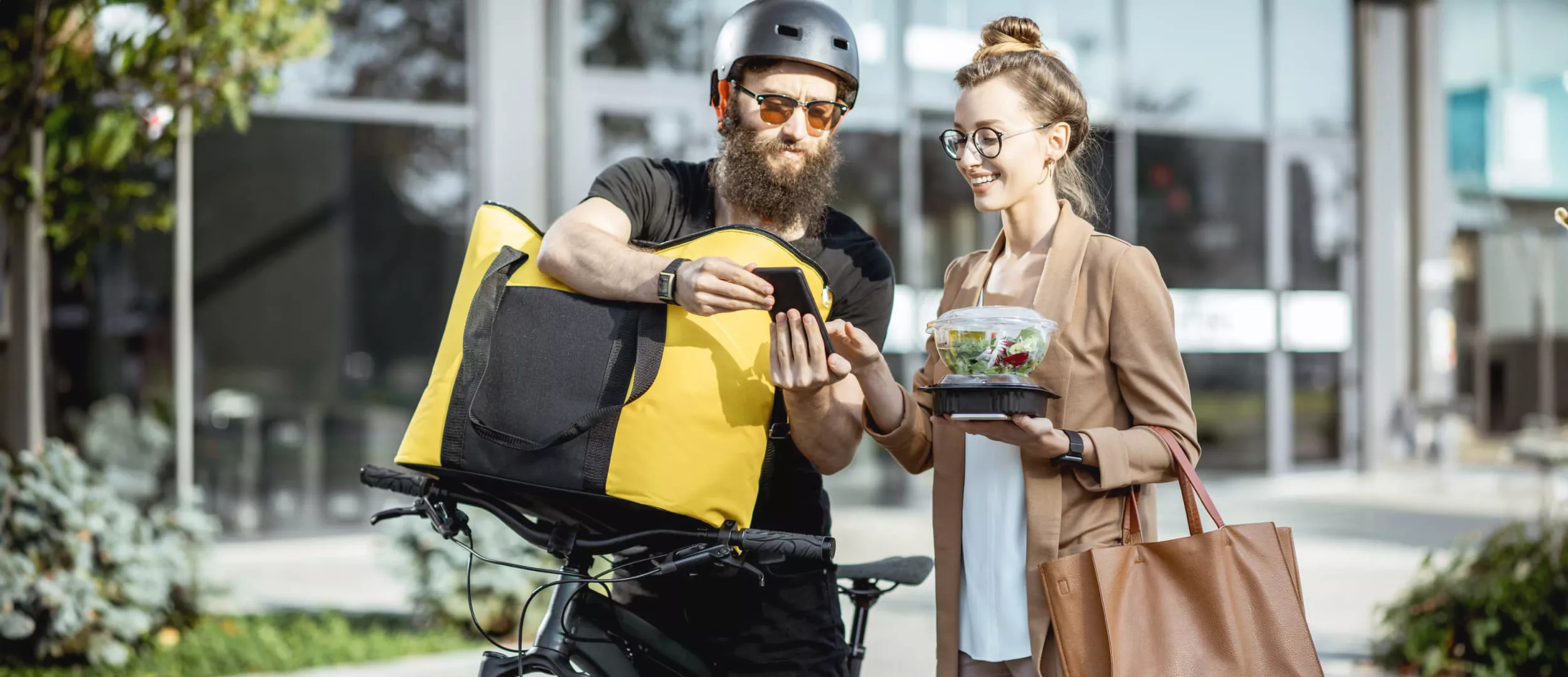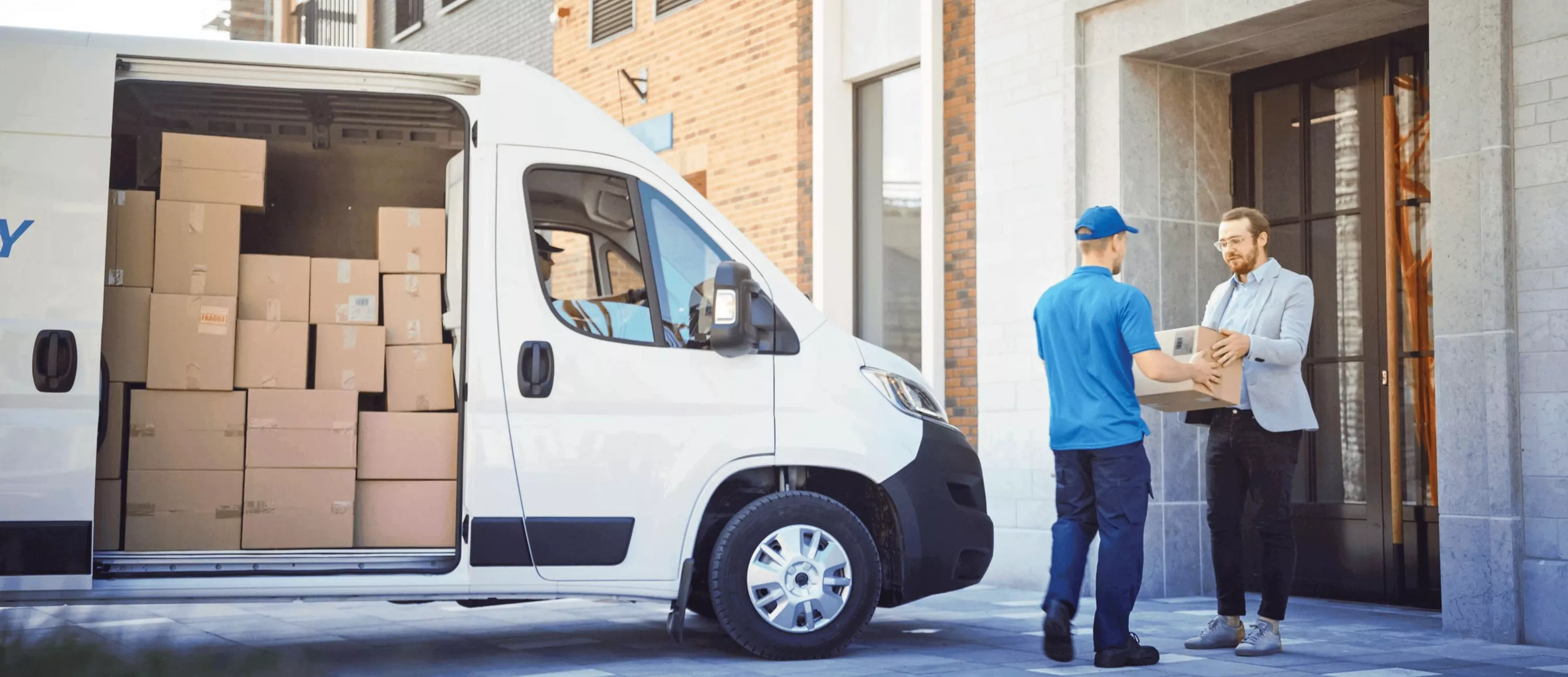
Late parcels don’t just annoy customers; they cost business money and reputation. If your logistics business is growing without a reliable parcel delivery app, you’re taking unnecessary risks.
But before you build an on-demand courier delivery app, consider several aspects. First, the business model. Do you need an Uber-like marketplace, a branded retailer app, or a parcel aggregator application for tracking packages? Next, you have to choose the right technology stack that can handle traffic spikes. Finally, you need to complete the delivery app development process step by step: discovery, UX/UI design, backend, integrations, and testing.
We covered each of these aspects in this playbook and added our own insights. Stfalcon (us) is a courier app development company with 16+ years of experience. We’ve delivered on-demand parcel delivery app solutions for leading postal and delivery services across Europe, so the advice here is practical and proven.
If you’re planning to build an online courier delivery app, this guide is a match. Let’s start with business model comparison.
TL;DR
Here’s what you should consider before developing a courier and parcel delivery app:
- First, define your business model: marketplace, branded retailer app, or aggregator.
- Tech stack follows model. Focus on real-time tracking & autoscaling for marketplaces; on ERP/CRM integrations for retailers; and on carrier API adapters + caching for aggregators.
- 5-step development process: Discovery → UI/UX → Backend & APIs → QA → Launch & iterate. Skip steps = rework.
- Costs: MVP $5k–$15k; mid-level $25k–$50k; enterprise $60
What’s the right business model for your parcel delivery app?
As said, before diving into design or code, start with your business model. It’s the foundation of every decision you’ll make in courier and parcel delivery app development.
The business model defines:
- How your company earns money (commission, subscription, delivery fees, etc.)
- How users interact with your platform (direct orders, marketplace, or tracking-only)
- What features and technologies your delivery app truly needs
In other words, the model sets the roadmap for your app’s structure, tech stack, and user experience. Choosing it early saves months of redesign later.
Here are 3 of the most popular parcel delivery app business models:
| 3 Business models for parcel delivery apps | ||
|---|---|---|
| On-Demand delivery marketplace | Branded retail App | Parcel aggregator |
| How it works: | ||
| Customers request delivery, and nearby couriers accept. | Your own package delivery app with full control over orders and tracking. | One place to track many carriers via integrations. |
| Examples: | ||
|
• Uber Connect • Glovo |
• Amazon Delivery • Walmart Spark • Nova Post |
• AfterShip • 17Track |
These choices set the direction for features, flows, and tech in your courier and parcel delivery app development. Now, let’s move to the technology stack.
Tech stack for courier and parcel delivery app development
The stack you choose will decide how fast your parcel delivery app runs, how safe payments are, and how easily you can scale from 1K to 100K daily orders. In courier and parcel delivery app development, there’s no single “best” stack. The right choice depends on your business model and the delivery app development process you plan to follow.
Decide by model first:
| Uber-like model | Retailer apps | Parcel aggregator apps |
|---|---|---|
| Prioritize real-time location, matching, surge traffic, and courier incentives. You’ll need low-latency tracking, websockets, and autoscaling. | Optimize for reliability, loyalty, and deep ERP/CRM links. Stable APIs, robust auth, and analytics matter most. | Focus on carrier APIs, normalization of statuses, and data quality. Caching, retries, and idempotency are critical. |
If you are in doubt about what tech stack to choose for your parcel delivery app, consider these 3 example stacks by scenario:
Marketplace scaling fast. Use React Native or Flutter + Node.js + PostgreSQL, Redis for queues, websockets for tracking, Stripe for payouts, and Kubernetes on AWS. It’s designed for on-demand parcel delivery spikes.
Retailer/postal and courier service application. Choose Swift/Kotlin + Spring Boot + PostgreSQL, Mapbox, Apple/Google Pay, FCM, and strong ERP/CRM integrations. It focuses on stability and loyalty.
Aggregator. We recommend React + FastAPI + PostgreSQL/MongoDB, carrier adapters, heavy caching, idempotent webhooks, and robust analytics. It should be built to power the best parcel tracking software dashboards.
Pick the smallest stack that reliably delivers your model today, and make sure it can evolve as you add features like AI-assisted routing, batching, or dynamic pricing. That’s how a courier app development company builds delivery app solutions without overengineering.
Planning to build a delivery app?
Stfalcon’s experts have 16+ years of experience in logistics and transportation.
Alina
Client Manager

Now, let’s get to the delivery app development and see its main stages.
5 key steps of the delivery app development process
Below is a step-by-step overview of the delivery app development process, based on Stfalcon’s approach to custom logistics software development.
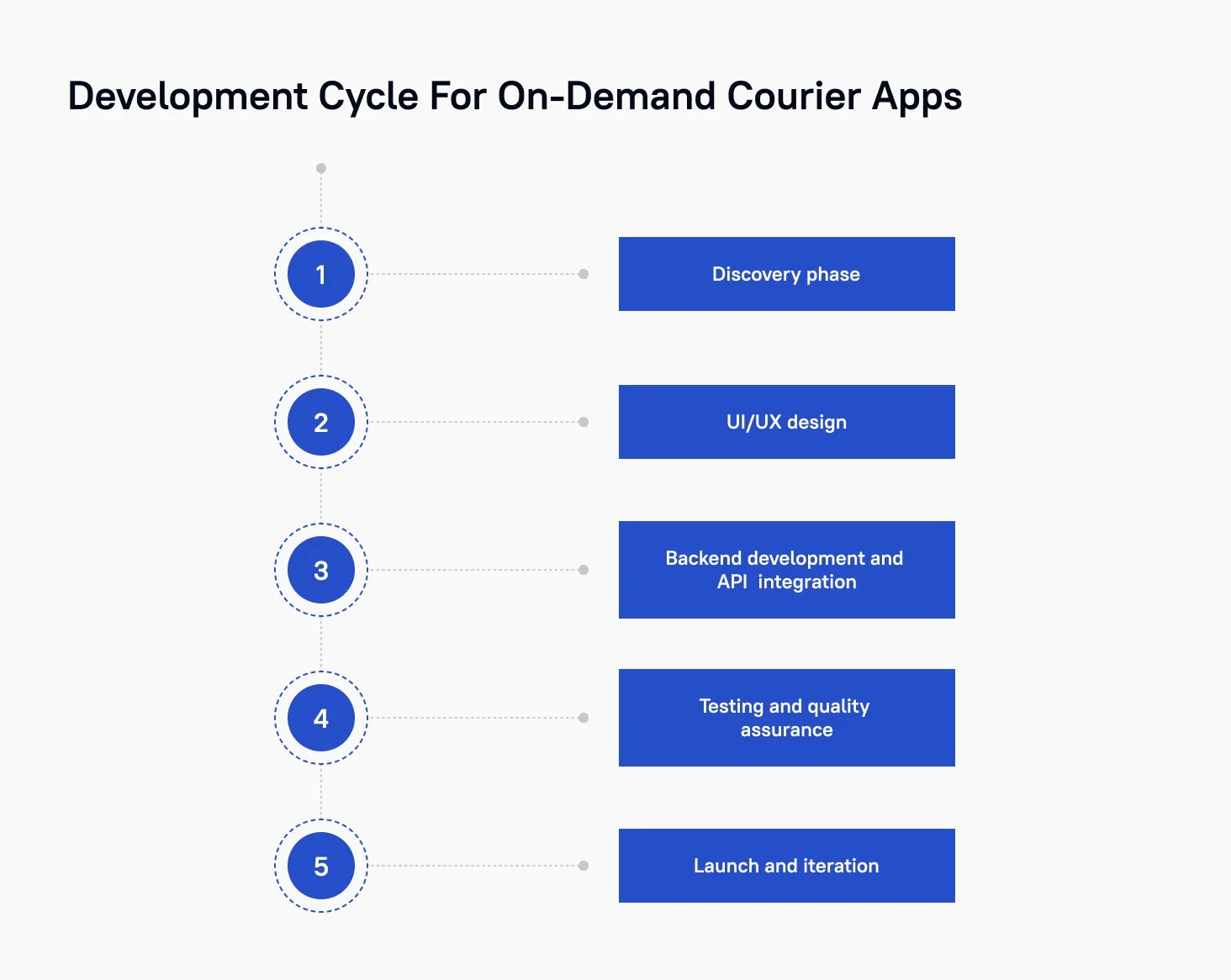
1. Discovery phase
Every successful courier delivery app development project starts with discovery service. This phase prevents wasted time and money later by clarifying your goals, scope, and priorities from the start.
When we worked with a logistics client in Saudi Arabia, they came to us with an idea: a platform where anyone could transport anything in a few clicks. We started with a structured discovery process to turn that idea into a roadmap.
Here’s what we delivered during discovery:
- Lean Model Canvas. First, we nailed the problem, solution, and revenue model to cut non-essential features and align the business with the app.
- Customer journey maps. We mapped sender/driver flows to see friction in pricing, insurance, and matching, and have an informed list of must-have features.
- Low-fidelity prototypes. We prototyped key journeys in days, so the client could validate assumptions with stakeholders and avoid rework later.
- Product vision and requirements. Finally, we defined MVP scope, timeline, and budget, so the client had clear time and cost estimates before full-scale development.
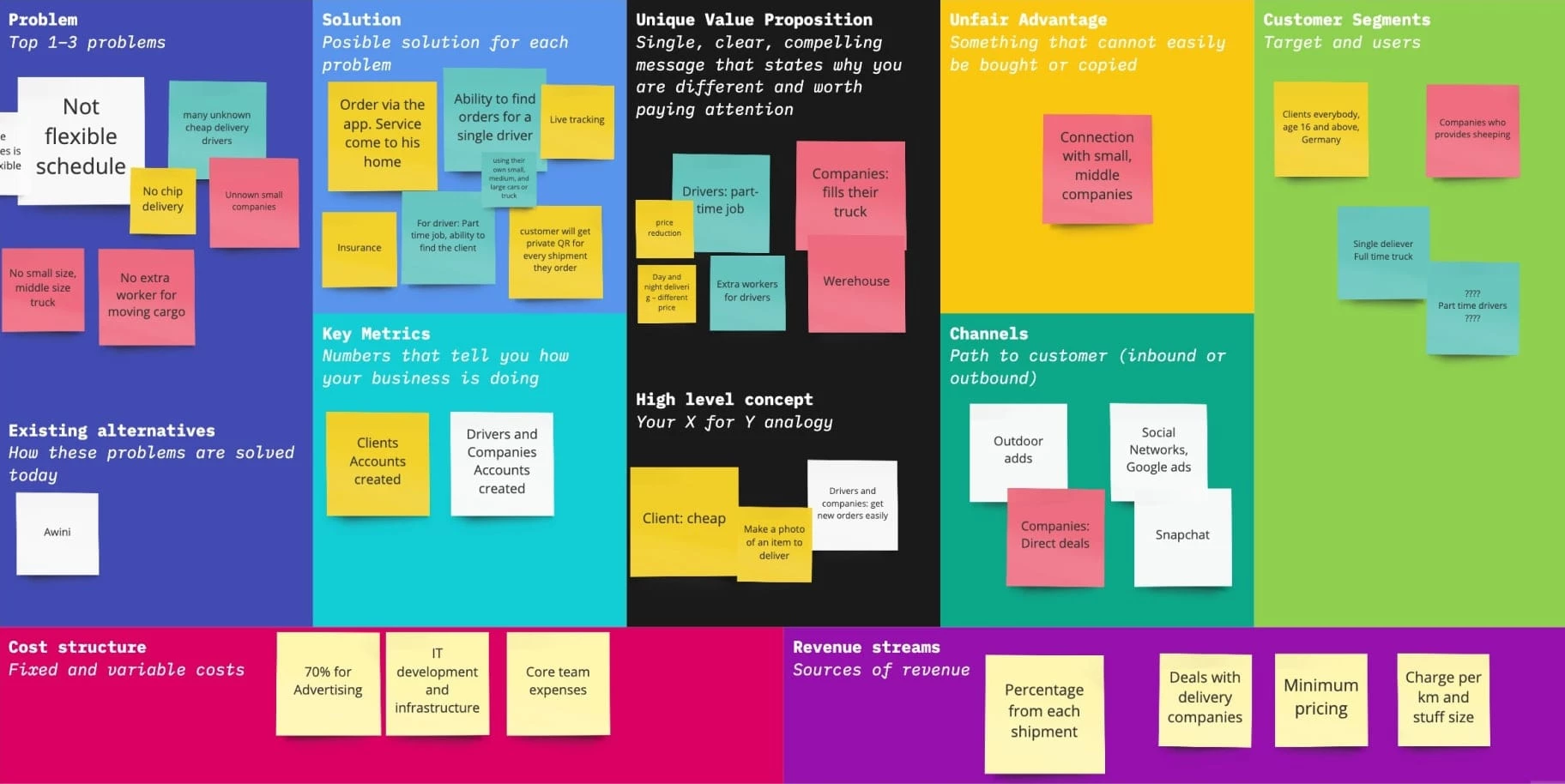
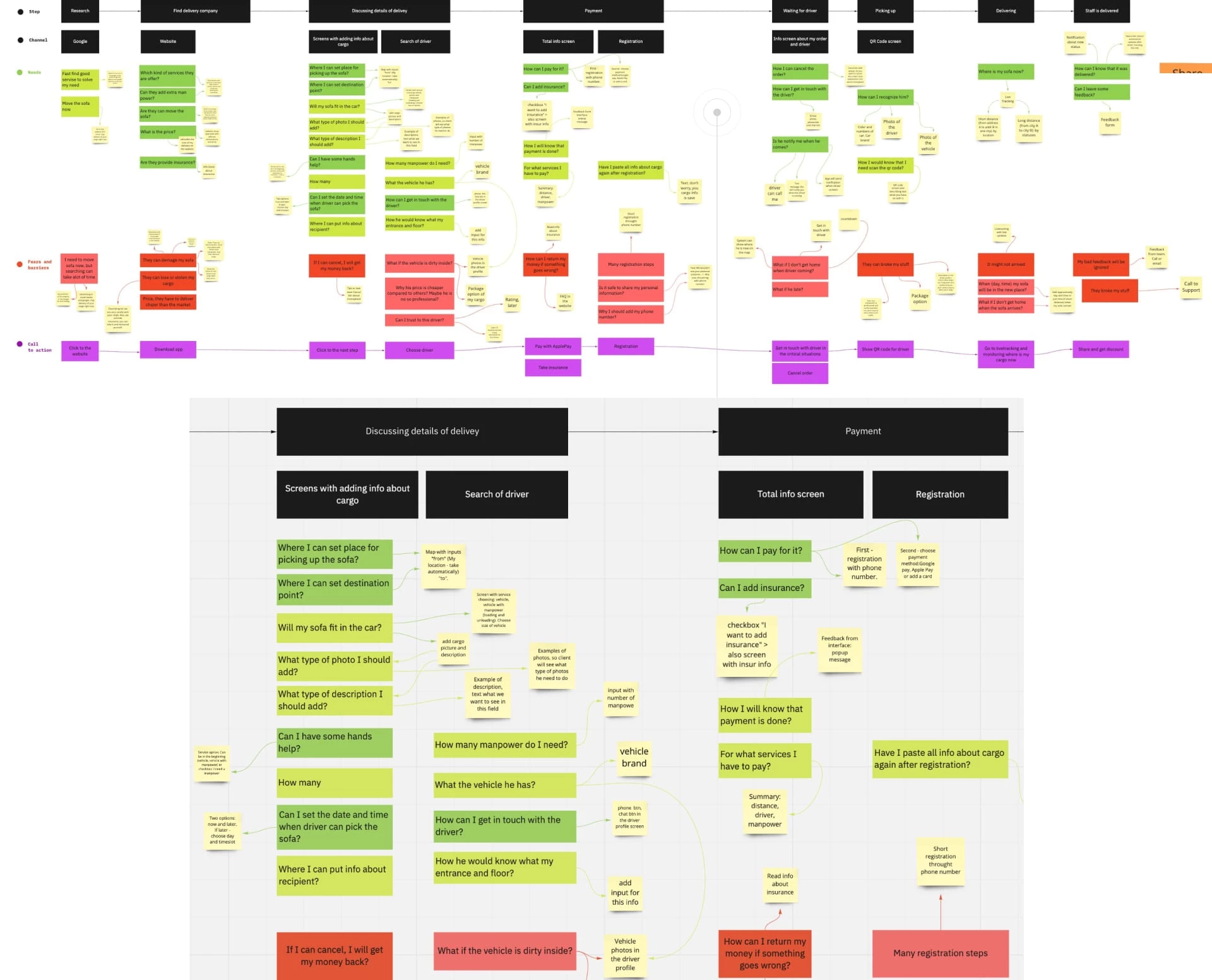
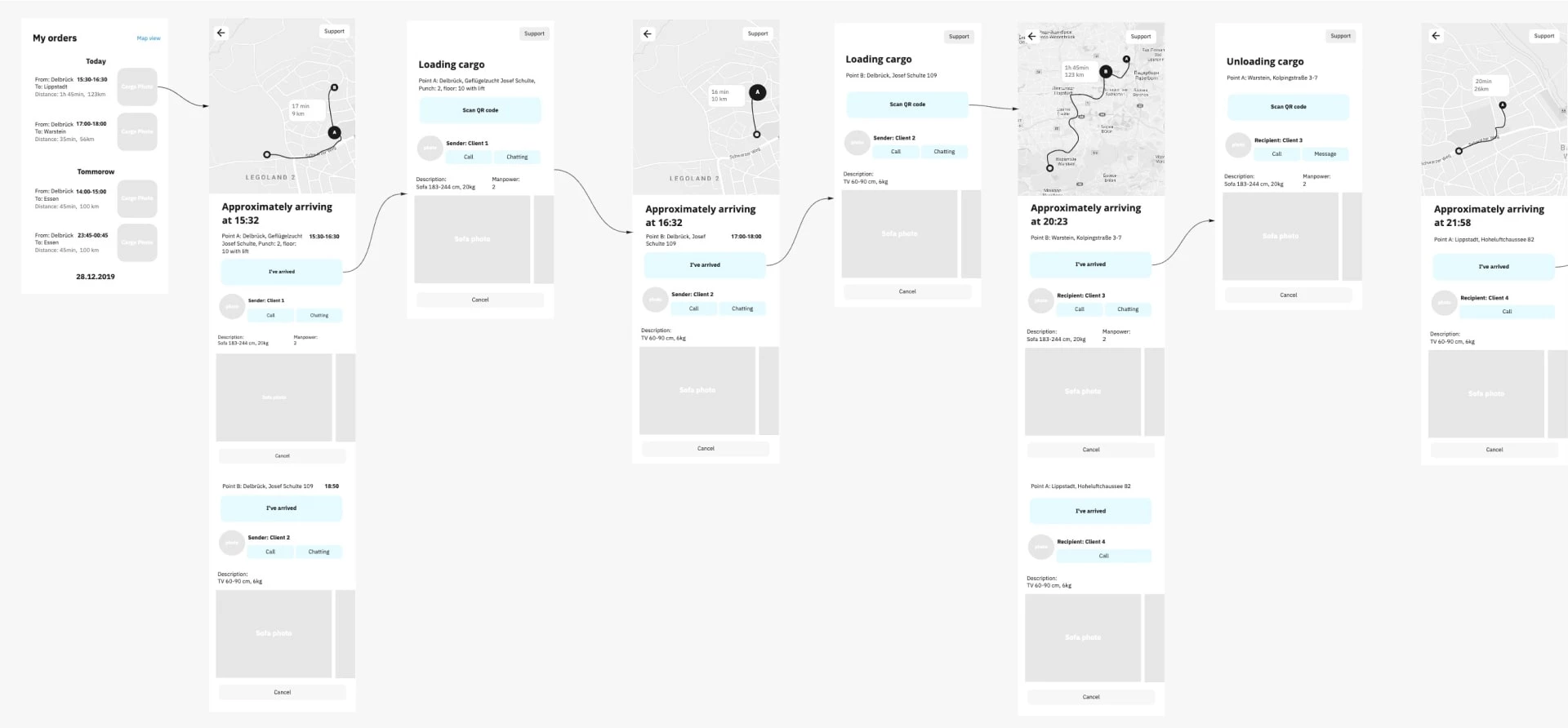
The discovery phase is crucial as it creates alignment between stakeholders and gives you a validated concept, saving months of guesswork and costly redesign later.
2. UI/UX design
A good transportation app UI/UX design is about removing friction. A well-designed delivery app makes complex logistics feel effortless for both users and delivery agents.
Let’s take the case of Nova Post, Ukraine’s leading postal delivery service with 13K+ branches and 25K+ parcel lockers. They reached out to Stfalcon to redesign their old parcel delivery application and make it faster and more intuitive.
The result was a completely rethought personal dashboard:
- Users can track, create, and manage shipments much faster.
- Repetitive tasks like creating invoices or reusing templates became one-click actions.
- Multilingual support with seamless language switching.
- Adaptive front-end architecture, so the app can connect to APIs without breaking logic.
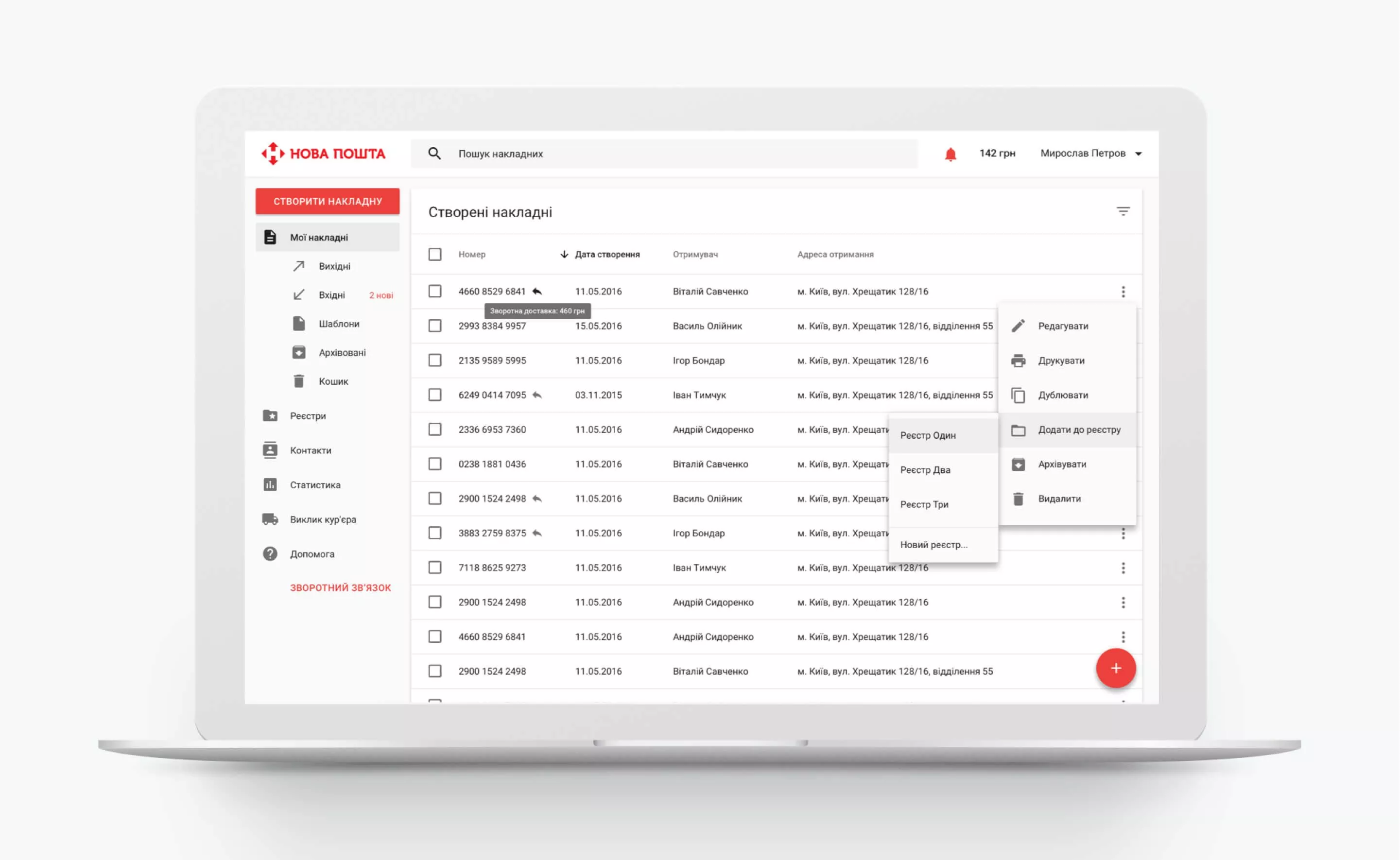
This design made Nova Post’s parcel web app faster to update, easier to scale, and more enjoyable to use.
Want to build a parcel delivery app?
We have carried out several projects for Nova Post, Ukraine’s delivery market leader. We can do it for you, too.
Alina
Client Manager

3. Backend development and API integration
The backend is the engine of every courier and parcel delivery app development project. It keeps all parts of the parcel delivery app, like orders, users, delivery agents, payments, and analytics, running in sync.
In the delivery app development process, the backend must handle thousands of real-time events: booking a courier, updating parcel status, processing payments, and sending notifications. That’s why at Stfalcon we mostly use frameworks like Node.js or PHP, combined with PostgreSQL or MongoDB for smooth performance and data accuracy.
API integrations are equally important. Every package delivery application relies on a network of connected systems:
- Maps & tracking: Google Maps, Mapbox, OpenStreetMap
- Payments: Stripe, PayPal, Apple/Google Pay
- Notifications: Firebase Cloud Messaging
- Third-party logistics APIs for parcel aggregator applications
Proper API design and authentication keep every transaction secure and every update instant.
4. Testing and quality assurance
Testing is what transforms a prototype into a reliable delivery application. Every courier delivery app must be tested across devices, OS versions, and network conditions before launch. QA engineers validate all core functions, including courier matching, payments, and real-time tracking, to ensure the app works seamlessly in every use case.
A complete QA process for pickup and delivery app development includes:
- Functional testing to verify booking, tracking, and payments.
- Performance testing to handle traffic spikes typical for on-demand parcel delivery platforms.
- Security testing to protect payment and personal data.
- Usability testing to ensure intuitive UX for couriers, customers, and admins.
Strong QA is a rule of thumb to avoid costly post-launch issues in your courier delivery service.
5. Launch and support
Launching the app is just the midpoint of on-demand courier delivery app development, not the end. After your courier delivery app goes live, continuous improvement begins.
Successful courier delivery app development projects rely on real-world data to evolve:
- Analytics to track order success rate, courier response time, and delivery accuracy.
- User feedback to refine UX and prioritize new features.
- Regular updates to add features like AI route optimization or multi-language support.
Market leaders like Uber Connect and Nova Post constantly enhance their parcel delivery applications based on user data and logistics innovations. The same approach applies to any courier app development company: keep testing, learning, and improving.
Finally, let’s talk about how much it costs to develop a delivery app.
Cost of developing a delivery app
In courier and parcel delivery app development, costs vary widely based on scope, technology, and business goals. But generally, you can imagine such numbers:
| Average cost breakdown | ||
|---|---|---|
| Basic parcel delivery app (MVP): $5,000–$15,000 | Mid-level delivery app: $25,000–$50,000 | Enterprise-grade parcel delivery software: $60,000–$100,000+ |
| Includes core features like registration, real-time tracking, and payment gateway integration. | Adds courier management, route optimization, and advanced analytics. | Built for scalability with API integrations, multi-courier support, custom dashboards, and AI logistics automation. |
To help clients estimate costs early, we use our Traffic Light Method:
- GREEN: MVP-ready (basic must-haves, fastest ROI)
- YELLOW: Growth-ready (adds smart tracking, courier dashboards)
- RED: Enterprise-ready (custom logic, full automation, advanced integrations)
Want a tailored estimate?
Get a free cost breakdown for your on-demand parcel delivery app.
Alina
Client Manager

To sum up about package delivery app development
Quality matters. Your users now expect the best parcel tracking software experience: live ETAs, secure payments, and instant notifications that always work. That level of reliability comes from sound architecture, rigorous QA, and continuous improvement.
If you’re serious about courier and parcel delivery app development, you need a partner who understands both logistics and software. Stfalcon has 80+ logistics experts and 16+ years of experience in custom logistics software development.
We move 30% faster thanks to AI-powered workflows and pre-built modules, which means that with us, you can launch your MVP in just 30 days on average.
Book a free consultation today and see how fast your delivery app can go live.
FAQs about on-demand courier delivery app development
How long does it take to build a parcel delivery app?
The average delivery app development process takes 3–6 months for an MVP and up to 9–12 months for a full-scale release. Timelines depend on your chosen business model, features (real-time tracking, payments, notifications), and platform (web, iOS, Android, or cross-platform).
What are the main monetization options for a courier delivery app?
Common parcel delivery app business models include:
- Commission-based: earn a fee on each delivery.
- Subscription model: offer unlimited or discounted deliveries for a monthly fee.
- Freemium or ad-based: provide basic services free and charge for advanced features.
The right model depends on whether your app follows a retailer apps approach or an on-demand delivery marketplace (Uber-like model).
Which features are essential for courier delivery app development?
Core features of any online courier delivery app include real-time tracking, push notifications, multiple payment options, courier verification, and an admin dashboard. More advanced on-demand parcel delivery app solutions also include AI route optimization, driver analytics, and multi-language support.
Should I build for iOS, Android, or both?
If you’re testing the market, a cross-platform app for parcel delivery (built with Flutter or React Native) offers faster deployment and lower costs. For large-scale courier delivery app development projects, native parcel delivery app development for iOS and Android ensures the best performance and access to platform-specific APIs.
How do you ensure security and compliance in a courier app?
At Stfalcon, every courier and parcel delivery app development project follows strict security and compliance standards. We use end-to-end encryption, secure APIs, and PCI-DSS–compliant payment gateways (Stripe, PayPal, Apple/Google Pay) to protect users, delivery agents, and customers. We build on-demand courier delivery apps that are fully secure and privacy-ready from day one.
Can I use the same app framework for food delivery applications?
Yes. The core logic behind pickup and delivery app development is similar across industries. We can adapt your courier delivery app for goods, groceries, or food delivery applications by tweaking UI, route logic, and service options.
How do I choose a courier app development company?
Look for a courier app development company with a portfolio that has relevant industry projects. Check if they’ve delivered courier delivery app development projects before. The right partner should understand both logistics workflows and software development.
If you are looking for a development partner who specializes specifically in logistics and transportation, Stfalcon can help. We’ve built delivery and transport solutions for market leaders in Ukraine and Europe alike, and can do it for you. Send us a message, and we’ll be happy to talk about your project.

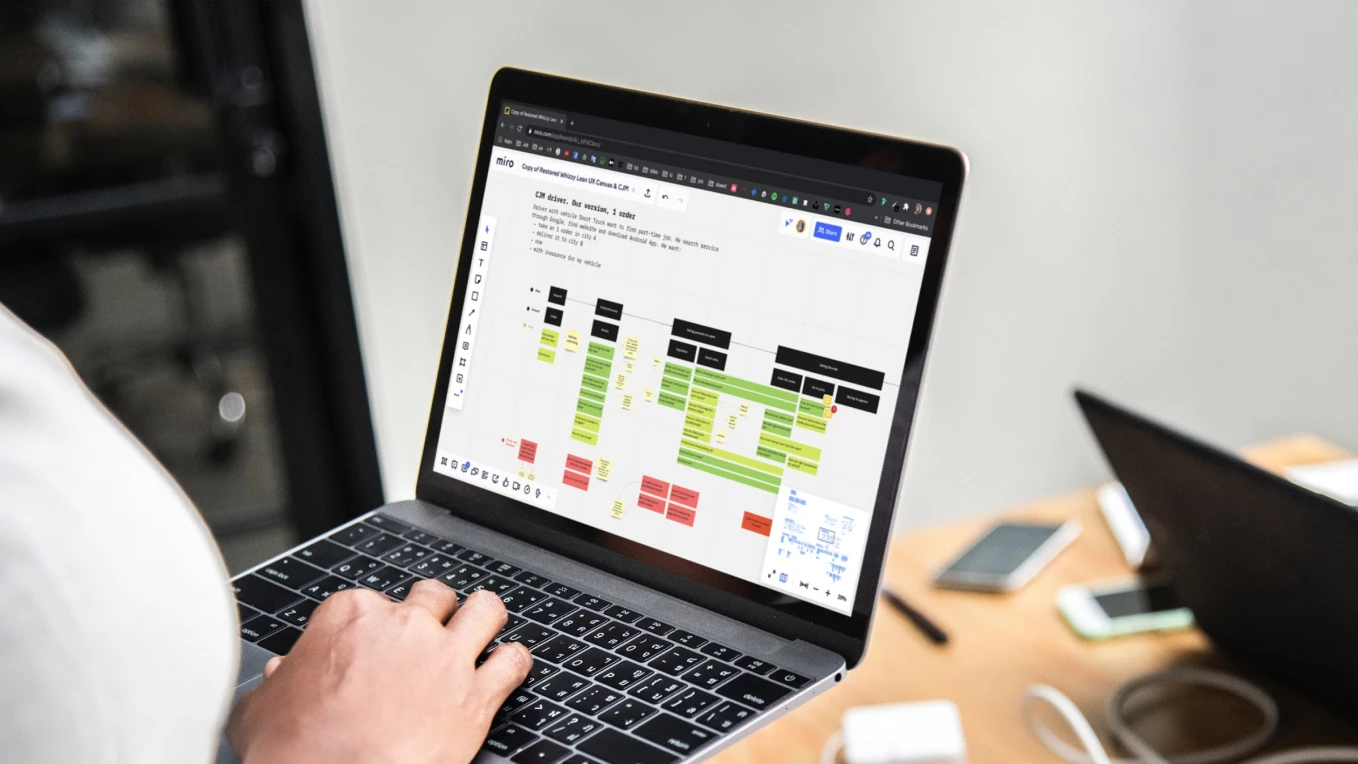 Read the full case study
Read the full case study
 Read the full case study
Read the full case study

